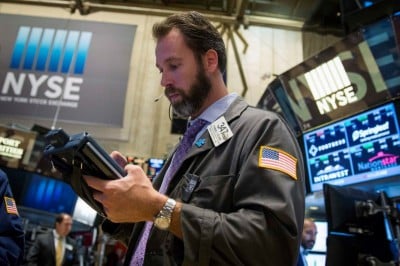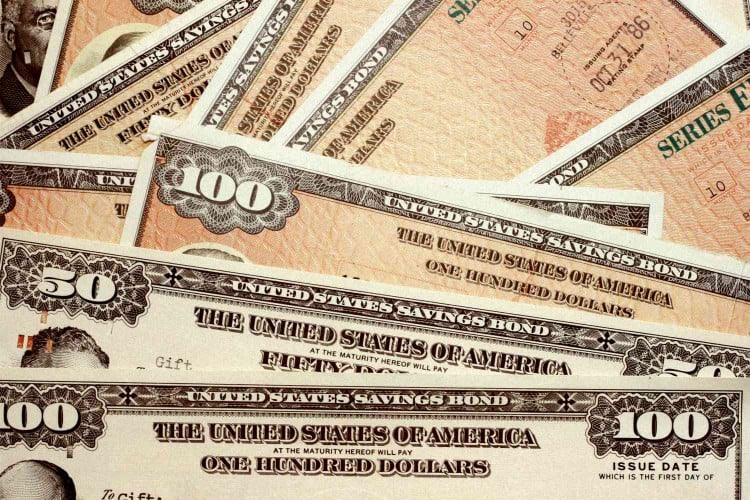
Maskot / Getty Images
In just a few short months, the COVID-19 pandemic decimated the U.S. economy in what was a largely unforeseen crisis—one that will affect the economy for years. Five other trends listed below will continue to affect the U.S., too, because larger forces are at play.
Understanding these six trends could help you can protect your financial future.
1. U.S. Recovery From the Pandemic
In the first quarter of 2020, as COVID-19 began its spread across the U.S., economic growth declined by 5%. This signaled the onset of the 2020 recession. It also ended 128 months of expansion, the longest in U.S. history. In the second quarter, the economy contracted by a record 31.4%. Quarterly gross domestic product (GDP) had never experienced a drop greater than 10% since record-keeping began in 1947. The economy recovered in the third quarter, expanding by 33.1%. Although a record, it was not enough to offset earlier losses.
In December 2020, it was forecast that U.S. GDP would contract by 2.4% in 2020 but rise by 4.2% in 2021. By the fourth quarter, it had risen 7.0%.
At the onset of the pandemic, the unemployment rate skyrocketed to 14.7% in April as companies furloughed workers. It remained in the double digits through July of that year. By the beginning of 2021, however, the unemployment rate had fallen to 6%. By the second month of 2022, it had decreased to 3.8%—very close to the unemployment rate just before the pandemic hit, which was 3.5%.
2. Interest Rates Are Slowly Rising
As the economy heats up, inflation is heating up, too. The Fed uses interest rates to help control inflation.
In March 2020, the Federal Open Market Committee (FOMC) held an emergency meeting to address the economic impact of the COVID-19 pandemic. It lowered the federal funds rate to near zero, targeting a range of between 0% and 0.25%. The fed funds rate is the benchmark rate for adjustable-rate and short-term loans.
In September 2020, the FOMC announced it would keep the benchmark rate at that level until inflation reached 2.0% over a long period of time. The Fed's December 16 forecast said that wouldn't occur until at least 2023. But it occurred much sooner than that. Supply chain issues, soaring home prices, and volatile oil price fluctuations, among other factors, caused inflation to rise rapidly. By February 2022, inflation had risen 7.9%—the largest jump since 1982.
The Fed had been taking steps to keep interest rates low on fixed-rate and long-term loans to encourage recovery after the pandemic. It had restarted its quantitative easing (QE) program in 2020 as well, announcing it would purchase $500 billion in U.S. Treasuries and $200 billion in mortgage-backed securities. It soon expanded QE purchases to an unlimited amount. The cost of loans plummeted, with mortgages falling to record-low levels. Such low borrowing costs spurred home prices higher still.
By its March 2022 meeting, the FOMC couldn't ignore the rapidly rising inflation any longer and announced it would begin selling securities as well as raising the target fed funds rate by 25 basis points, to 0.25% to 0.50%. The FOMC also said it expected to continue raising rates to get inflation under control.
3. Climate Change Is Causing More Natural Disasters
The U.S. climate is changing as a result of global warming caused by increased greenhouse gases. As the country experiences more hot days, food prices rise. Both corn and soybean yields in the United States plummet precipitously when temperatures rise above 84 degrees Fahrenheit.
Note
Climate change creates unpredictable and violent storms, droughts, and floods.
Rising sea levels worsen flooding in low-lying towns, threatening the 30% of Americans who live in coastal counties and eight of the world's 10 largest cities. Floods have hit U.S. coastal towns three to nine times more often than they did 50 years ago. From 2005 to 2017, sea level rises cost 20 ZIP codes in Florida, Virginia, and South Carolina more than $2 billion.
Between 2014 and 2016, the drought in California cost the state an estimated $3.8 billion. Almost three-quarters of the losses were in the southern Central Valley. As the drought drags on throughout the American Southwest, climate change worsens the already-dry climate by accelerating water evaporation, resulting in a decades-long "megadrought."
The frequency of western U.S. forest fires has increased by nearly 400% since 1970. Damaging wildfires have occurred in recent years in places including California, Colorado, and Oregon.
4. Financial Markets Control Oil, Gas, and Food Prices
Supply and demand have become less important in controlling prices. Instead, commodities traders set prices for oil, gas, and food, and foreign exchange traders determine the value of the dollar. The speed of transactions has also increased economic volatility. Gas and oil prices rise and fall, depending on investors' moods. This translates to either higher food costs or plummeting commodities prices.
5. The U.S. Is Declining in Global Economic Power
Before the Great Recession, the United States was the world's only superpower. In 2009, the G-20 took center stage in the global economy and gave more clout to Brazil, Russia, India, and China.
These emerging-market countries initially survived the recession better than Europe or the United States did. Their strong economies gave them the leverage to demand more global economic power. Although they've since created new economic problems for themselves, they've retained much of their clout.
Note
The emergence of other global economic powers has contributed to American unease.
The perceived loss of American superpower status is behind the attacks on free trade, jobs outsourcing, and currency manipulation. Even with protectionist policies, however, these emerging market nations will continue to grow in power.
6. Retirement Is Uncertain for Many
The Annual Retirement Confidence Survey showed that in 2021, about a third of American workers lost confidence that they will have enough to live comfortable in retirement. Even those who can afford to retire may keep working in some capacity. The Great Recession and the pandemic both left emotional scars.
Many people will adapt by giving up the old "career track." They want to earn a living that is meaningful to them. Some use technological innovation and remote work to create new jobs that suit their lifestyles. Others have gone on to receive higher-level degrees. Still others use temporary jobs to fund a rewarding lifestyle, a trend that falls in line with companies wanting to keep overhead low, avoid health care expenses, and keep hiring and firing fluid by employing gig workers.
Note
To thrive, workers must create multiple streams of income and remain flexible themselves.
The best ways to thrive? Find a freelance gig. Try to find a way to make money from a hobby. Be realistic about your attractiveness in the job market, whether due to your age or your work history. Get new skills for a part-time job that could turn into something more. Be open-minded about what you can do to earn more money. Stay focused on turning your skills, assets, and time into more cash. Be aware of economic trends, and take advantage of them.
Frequently Asked Questions (FAQs)
What is an economic trend?
An economic trend can be any indicator measurement that shows a pattern in the economy. Some of the most common economic trends are the phases of the business cycle. For example, the contraction phase occurs when the economy trends downward, and the expansion phase is an economic uptrend. More detailed economic trends may look at cycles of employment, income, or the prices of equities and commodities.
How big is the U.S. economy?
In the first quarter of 2022, the U.S. economy had a nominal gross domestic product of $24.28 trillion (seasonally adjusted annual rate). The total American civilian workforce population in May 2022 totaled roughly 164.38 million (seasonally adjusted).






